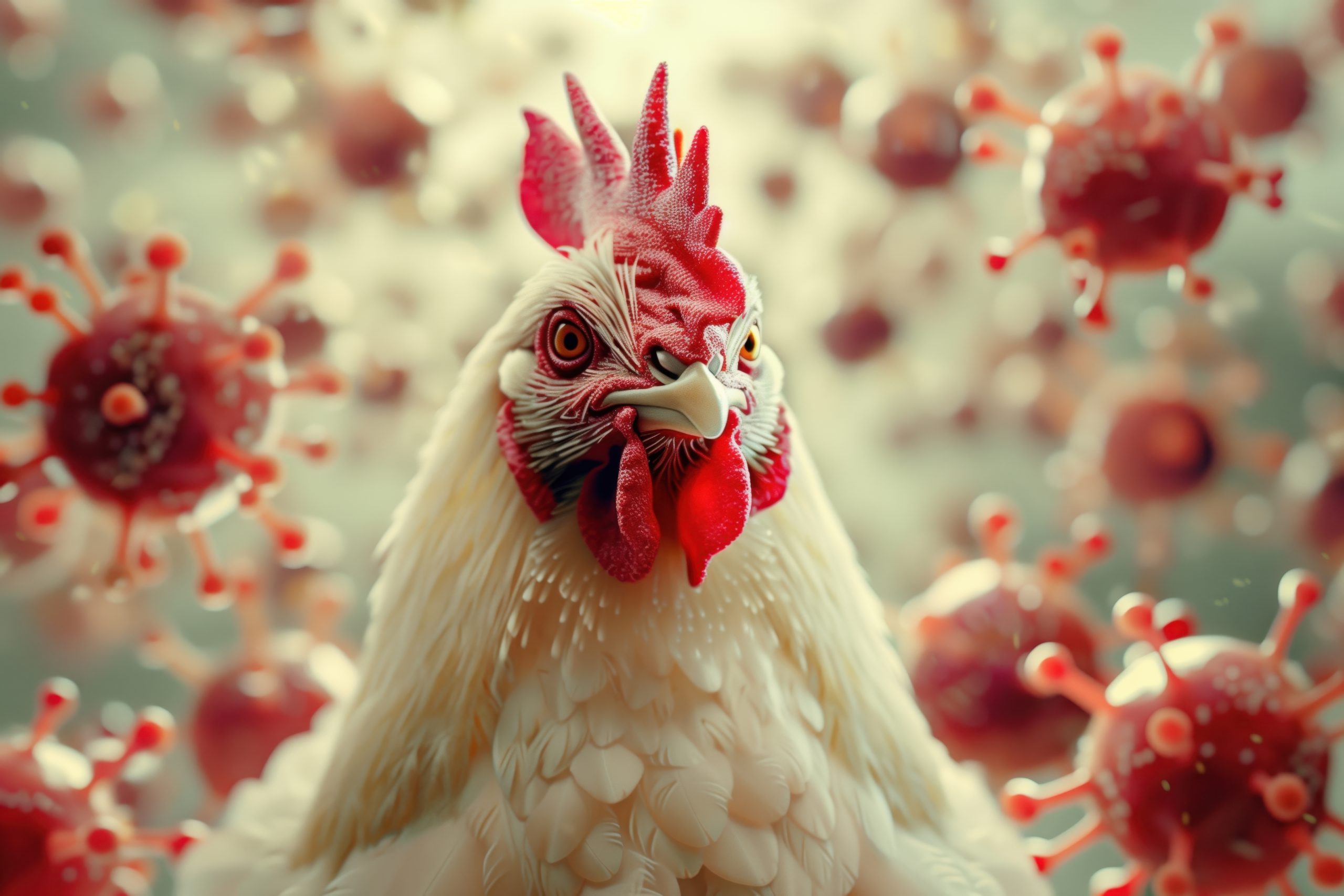
Animal Healthcare
Understanding Avian Influenza in Poultry: Risks and Preventive Measures
Avian influenza in poultry continues to be a major threat to the global poultry industry, affecting animal health, food security, and trade. Also known as bird flu, this highly contagious viral disease is caused by the avian influenza virus in poultry, primarily of the subtypes H5, H7, and H9. While outbreaks can vary in severity, highly pathogenic avian influenza (HPAI) strains can result in sudden and high mortality, causing devastating economic losses.
What Is Avian Influenza in Poultry?
Avian influenza in poultry is caused by influenza type A viruses that naturally circulate among wild birds but can infect domestic birds such as chickens, ducks, and turkeys. The virus spreads through direct contact with infected birds, contaminated equipment, feed, water, or through human movement between farms. Once introduced into a flock, the virus can spread rapidly, especially in densely populated poultry environments.
Symptoms of avian influenza in poultry include sudden death without signs, respiratory distress, swollen head, cyanosis of the comb and wattles, and reduced egg production. However, symptoms can vary depending on the virus strain and the bird species involved.
Economic and Zoonotic Impact
Apart from causing production losses, avian influenza outbreaks often trigger trade bans, impacting the poultry export industry. Some strains of the avian influenza virus in poultry are also zoonotic, meaning they can be transmitted to humans under specific conditions, raising public health concerns.
Prevention of Avian Influenza in Poultry
Given the serious implications, the prevention of avian influenza in poultry is critical. Here are key strategies that poultry producers should implement:
1. Strict Biosecurity Measures
The cornerstone of prevention lies in robust biosecurity. Limit farm access to essential personnel only, disinfect vehicles and equipment, and ensure that workers follow hygiene protocols such as changing clothes and footwear before entering poultry houses.
2. Separate Wild and Domestic Birds
Wild birds are natural carriers of the avian influenza virus. Preventing contact between wild birds and domestic flocks through proper fencing, netting, and covered feeding areas significantly reduces the risk of transmission.
3. Regular Surveillance and Testing
Routine monitoring and laboratory testing help in early detection of the virus. Quick action based on surveillance data can prevent localized infections from becoming widespread outbreaks.
4. Farmer Awareness and Training
Educating farmers on the signs of avian influenza in poultry, the importance of early reporting, and biosecurity practices is essential for effective disease control at the grassroots level.
The threat of avian influenza in poultry remains real and persistent. While complete eradication is challenging, a combination of biosecurity, surveillance, vaccination, and education can go a long way in mitigating the risks. Early detection and prevention not only protect poultry health and farm incomes but also contribute to food safety and public health. For poultry producers, proactive prevention is the best defense against this evolving viral threat.







Add your comment